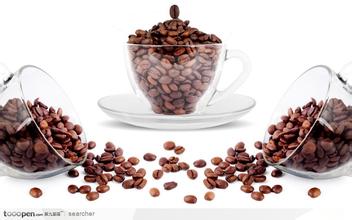Coffee mellowness-- what does coffee body mean?
Coffee mellowness-- what does coffee body mean?
In mouse experiments, these two diterpenes are also thought to have anticancer effects. Epidemiological studies have found that coffee drinking has an inhibitory effect on certain types of cancers such as colon cancer. Animal data support the preventive effect of coffee. The wide range of biochemical effects produced by caffeine and caffeinol can reduce the effects of some carcinogens, including polycyclic aromatic hydrocarbons (a class of chemicals produced by burning organic materials), aflatoxin B1 (a mycotoxin) and other substances. Different mechanisms of action are related to different protective effects, but these mechanisms have not yet clarified the Body: the final stage of cup review is to evaluate the taste of coffee water. The tongue slips gently across the palate of the mouth to feel the texture of the coffee. The feeling of oily quality and smoothness can measure the fat content of coffee water, while the feeling of "weight", thickness and stickiness of coffee can measure the fiber and protein content of coffee. The two make up the mellow aftertaste of coffee (Aftertaste): the fifth step is to put the coffee water in your mouth for a few seconds, and then swallow a small part. Quickly suck the throat to send the water vapor left in the back palate into the nasal cavity, you can find the smell of the heavier molecules left in the back palate. The smell of various compounds in the aftertaste stage is sweet, similar to chocolate; or bonfire smoke, or cigar smoke; sometimes, there are similar irritating spices, such as cloves; sometimes, like resin, similar to turpentine; sometimes, there are all these smells.
Nose: the fourth step is the same as the third step. Inhale coffee through the surface of the tongue. Due to the change of water vapor pressure, part of the organic matter in the water changes from liquid to gaseous state. The act of sucking coffee hard causes the gas to enter the nasal cavity, allowing cup reviewers to analyze the smell of coffee. At the same time, evaluate the taste and smell of coffee, so that cup reviewers feel the unique flavor characteristics of coffee. Standard roasted coffee usually has the taste of caramelized products, while deep-roasted coffee usually has the taste of dry distillation products. Taste (Taste): carefully savoring the taste of freshly brewed coffee is the third step in cup review coffee. Use a special coffee spoon, usually a round spoon with a capacity of 8 ~ 10cc. Preferably silver-plated, which can dissipate heat quickly. Take out 6 ~ 8cc of coffee water and put it in front of your mouth and sip it hard. Quickly inhale coffee and distribute it evenly on the surface of the tongue. All sensory nerve terminals respond to sweet, salty, sour and bitter tastes at the same time. Because temperature affects the degree of stimulation, paying attention to responses in different sensitive areas of the tongue can help capture different characteristics. For example, because temperature reduces sensitivity to the sweetness of sugar, acidic coffee initially produces a tingling on the tip of the tongue rather than sweetness. Hold the coffee in your mouth for 3-5 seconds and focus on the type and intensity of the taste. In this way, primary and secondary flavor characteristics can be evaluated.

Important Notice :
前街咖啡 FrontStreet Coffee has moved to new addredd:
FrontStreet Coffee Address: 315,Donghua East Road,GuangZhou
Tel:020 38364473
- Prev

Planting conditions, Environmental yield and quality of Coffee trees
Planting conditions, yield and quality of coffee tree transplanting seedlings: standard of transplanting seedlings: after the seeds are unearthed, the cotyledons have spread to the true leaves and the seedlings have not yet grown, because at this time, the seedlings have begun to work on the first or second round of lateral roots, and the growth is faster after transplanting seedlings, and before transplanting, the sand bed is drenched with water first. When raising seedlings, protect the root system as far as possible, and seedlings should be cut as soon as possible. And pay attention to keep the roots of the seedlings moist. Plant line spacing according to product
- Next

How to make American Coffee with concentrated Powder in Italy
The ratio of Italian concentrated powdered water to how to make American coffee has changed as light-roasted, high-altitude coffee has become more popular in the past few years. Today, coffee shops in the United States, Europe and Australia are accustomed to using the gouache ratio of Normale espresso (1buzz 1.5 or 1:2). As more coffee shops use individual coffee to make.
Related
- Beginners will see the "Coffee pull flower" guide!
- What is the difference between ice blog purified milk and ordinary milk coffee?
- Why is the Philippines the largest producer of crops in Liberia?
- For coffee extraction, should the fine powder be retained?
- How does extracted espresso fill pressed powder? How much strength does it take to press the powder?
- How to make jasmine cold extract coffee? Is the jasmine + latte good?
- Will this little toy really make the coffee taste better? How does Lily Drip affect coffee extraction?
- Will the action of slapping the filter cup also affect coffee extraction?
- What's the difference between powder-to-water ratio and powder-to-liquid ratio?
- What is the Ethiopian local species? What does it have to do with Heirloom native species?

